Related Services
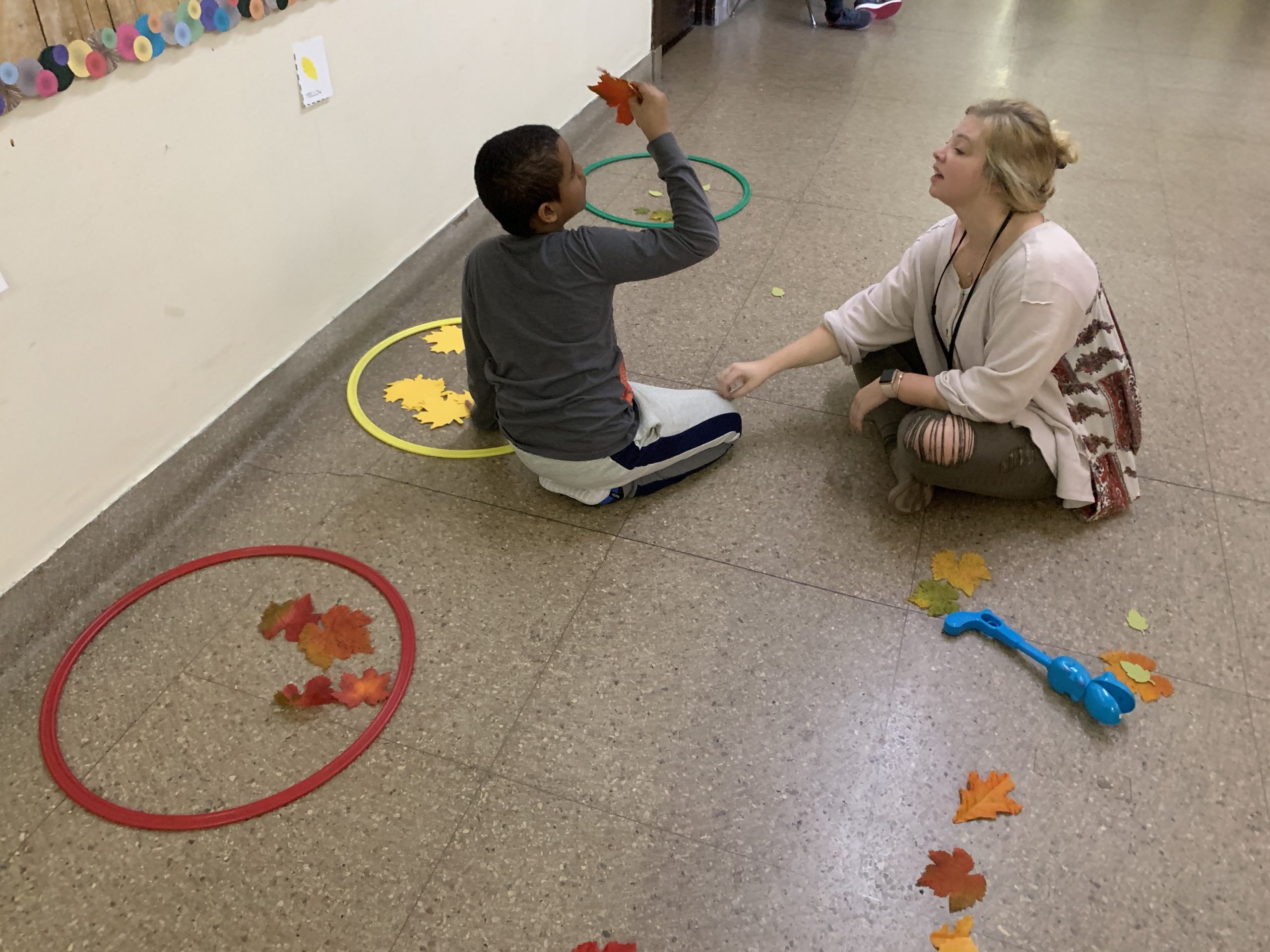
Occupational Therapy:
Student: Emphasis is on remediation or restoration of skills and promotion of behaviors to improve participation in the learning environment. Addresses resources intrinsic to the student such as body structures and functions, behavior, motivation and skills.
Task:
Focus is on compensating student’s skills by modification of the physical and cognitive demands of an activity to improve student’s performance and participation in instructional and non academic activities.
Emphasis is on resources extrinsic to the student such as materials used, or procedures followed to complete a task.
Facilitate intrinsic compensatory skills unique to each student
Environment: Focus is on compensating a student’s skills by modification and adaptation of the environment.
Locations – in and out of the school building
-
Several sunny fully equipped therapy rooms to provide specialized services
-
Services are push in, incorporated in classroom for inclusion
-
Pull-out to address unique needs in sensory gym, motor room, large or small gym
-
Art room
-
Large playground – common garden for academic and sensory learning
Specialized Adaptive Equipment
Supports multiple diagnoses so every child is included. May include wheelchairs, walkers, standers, specialized class chairs to support learning.
Provide in-school resources for splints, wheelchairs, adaptive seating.
Multisensory Approach:
Various visuals to stimulate
Tactile – theraputty, symbols, scented play putty, raised surfaces (letters, numbers, pictures) to support low vision students
Outdoors field trips to nearby parks, gardens.
Collaboration
School based events: Community day, Family day, Holidays, Student Achievement Recognition Day.
Planning and integrating IEP goals into collaborative lessons in and out of the classroom focus on academics, play, socialization, work skills, and self-care.
Families: connect families with medical, leisure, extra-curriculum activities to support students’ overall needs. Communicate with families to assist with carry-over of IEP goals to the home environment.
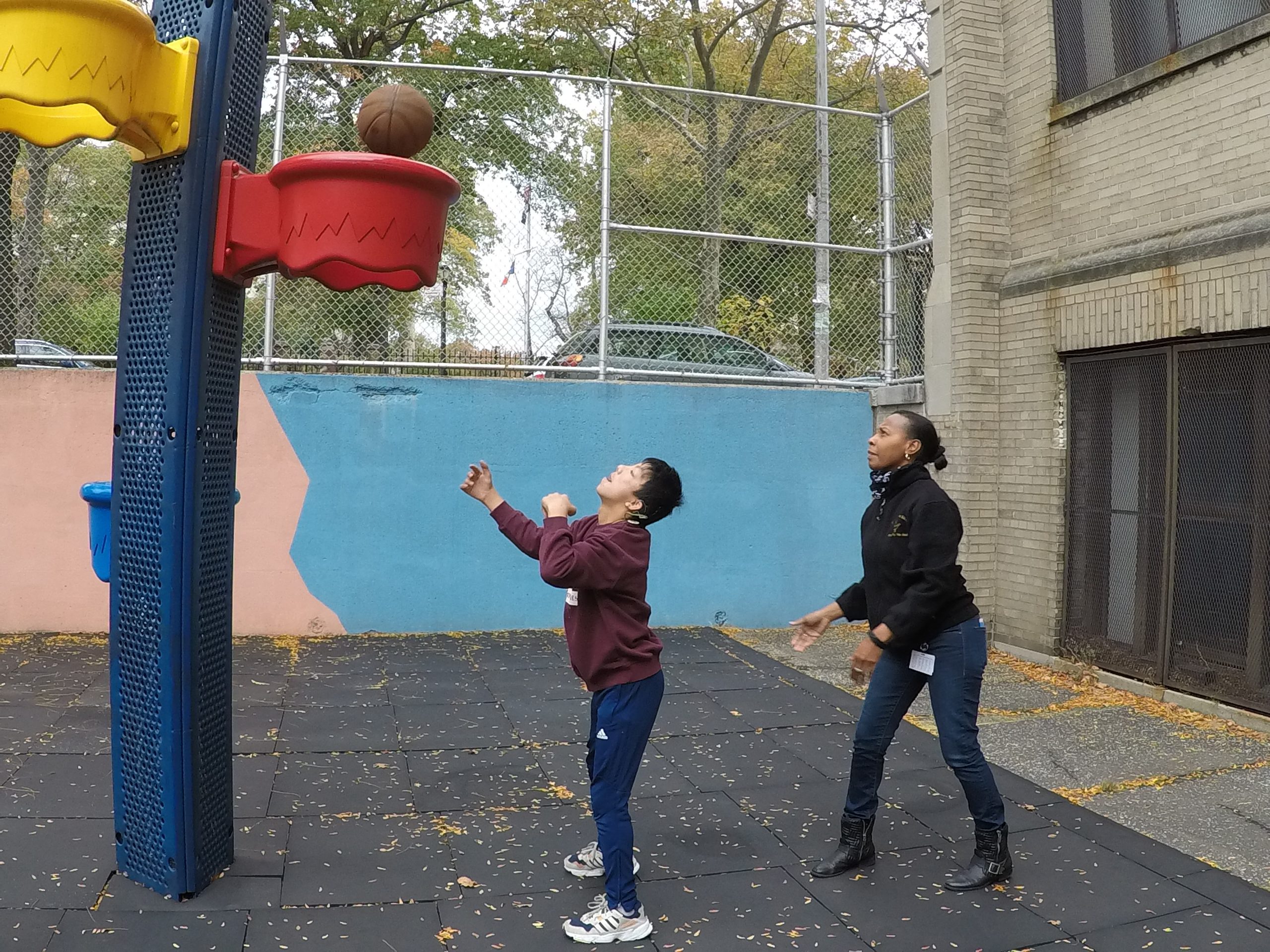
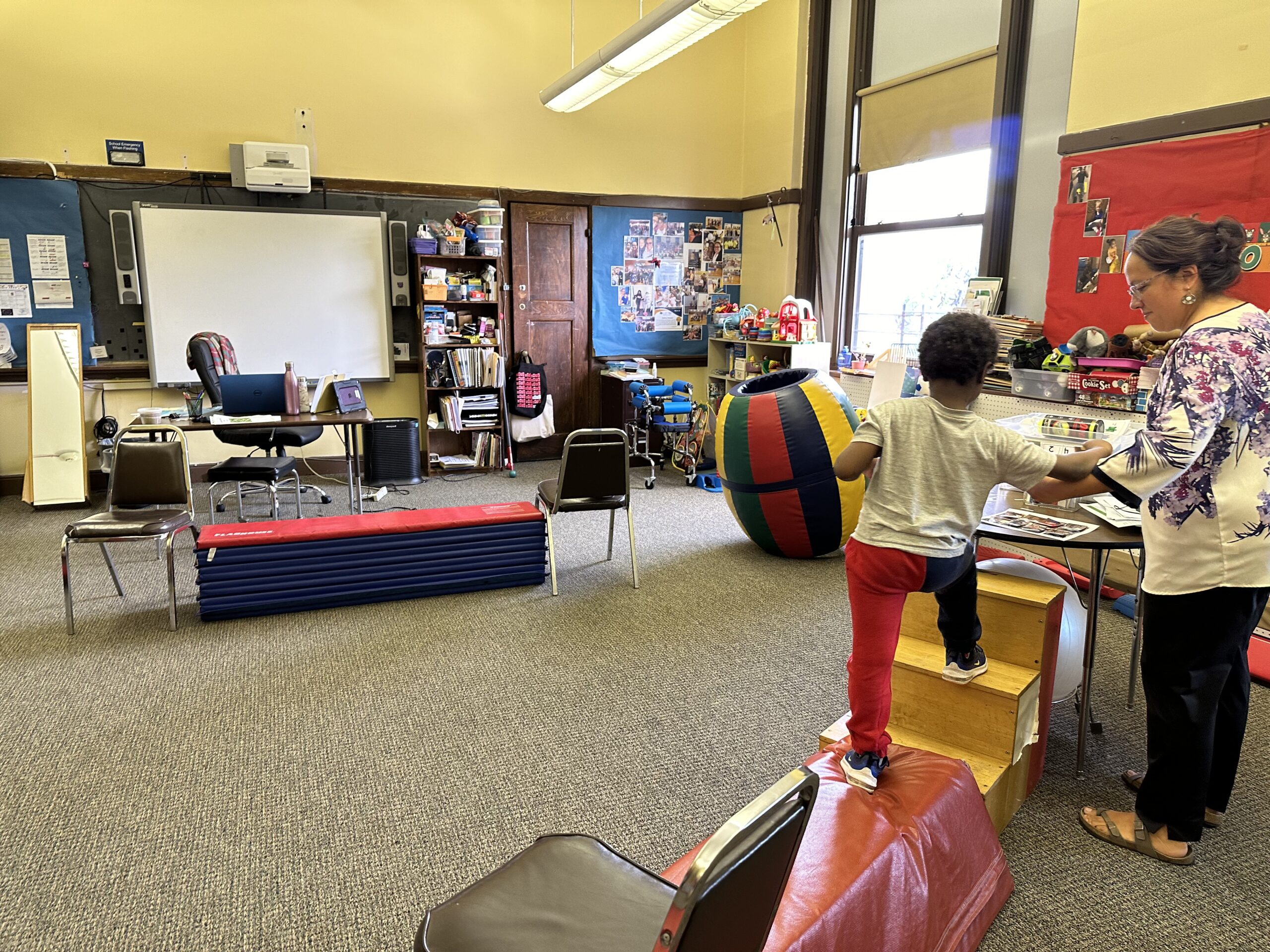
Physical Therapy
Our experienced and dedicated physical therapists work closely with other educational and healthcare team members inside and outside of the school to ensure the best quality of care for each student. To provide each student every opportunity to succeed, our physical therapists design individually tailored, goal-driven, safety-conscious, and functional intervention plans that address limitations in motor skills due to various musculoskeletal, neuromuscular, and cardiopulmonary disabilities. These programs aim to strengthen the child’s abilities towards greater independence and ensure maximum participation in the academic environment and community while using multimodal and multilingual communication strategies such as ASL and AAC.
St. Francis de Sales prides itself in having expansive facilities and therapy equipment that allow our physical therapists to explore a variety of multi-sensorial, relevant, and real-world treatment approaches that best suit each student’s needs.
We coordinate with teachers and other members of the educational team by:
- formulating relevant and appropriate annual gross motor goals for the IEP, monitoring their progress, and modifying/replacing goals, when necessary.
- integrating physical therapy goals in collaborative lessons in and out of the classroom to ensure better generalization of skills.
- providing push-in services (when appropriate) within the school building or when out in the community (such as field trips).
- providing training opportunities for classroom staff when using necessary therapeutic equipment (for transfers).
- monitoring the classroom seating needs of each student to promote correct posture and alignment and ensure maximum participation in class work.
We collaborate with other healthcare professionals and equipment vendors through:
- communicating with doctors, nurses, psychologists, social workers, orthotists, audiologists, and other therapists regarding relevant medical information and possible interventions that may affect the student’s performance in school and in the community.
- conducting comprehensive consultations with Durable Medical Equipment (DME) vendors (for wheelchairs, seating options, and mobility equipment) and orthotists (for bracing) to determine the most appropriate devices according to the student’s and the family’s needs.
- formulating medical justifications for DME approval to insurance agencies as needed.
- engaging in teaching and training opportunities for both physical therapy students and volunteers who are interested in addressing the needs of our unique population, whenever possible.
We assist families and caregivers and help empower them in delivering continued care to their child by:
- communicating with family members and caregivers on a regular basis to discuss goals, progress, and relevant medical or therapeutic concerns that affect the child’s performance.
- formulating home exercise programs that encourage active involvement of the child’s family/caregivers to ensure generalization of motor skills learned in school.
- encouraging the family and caregivers to be advocates for their child’s physical therapy needs and to have a life-long commitment towards increased mobility, independence, and active participation.
Communication & Language Department
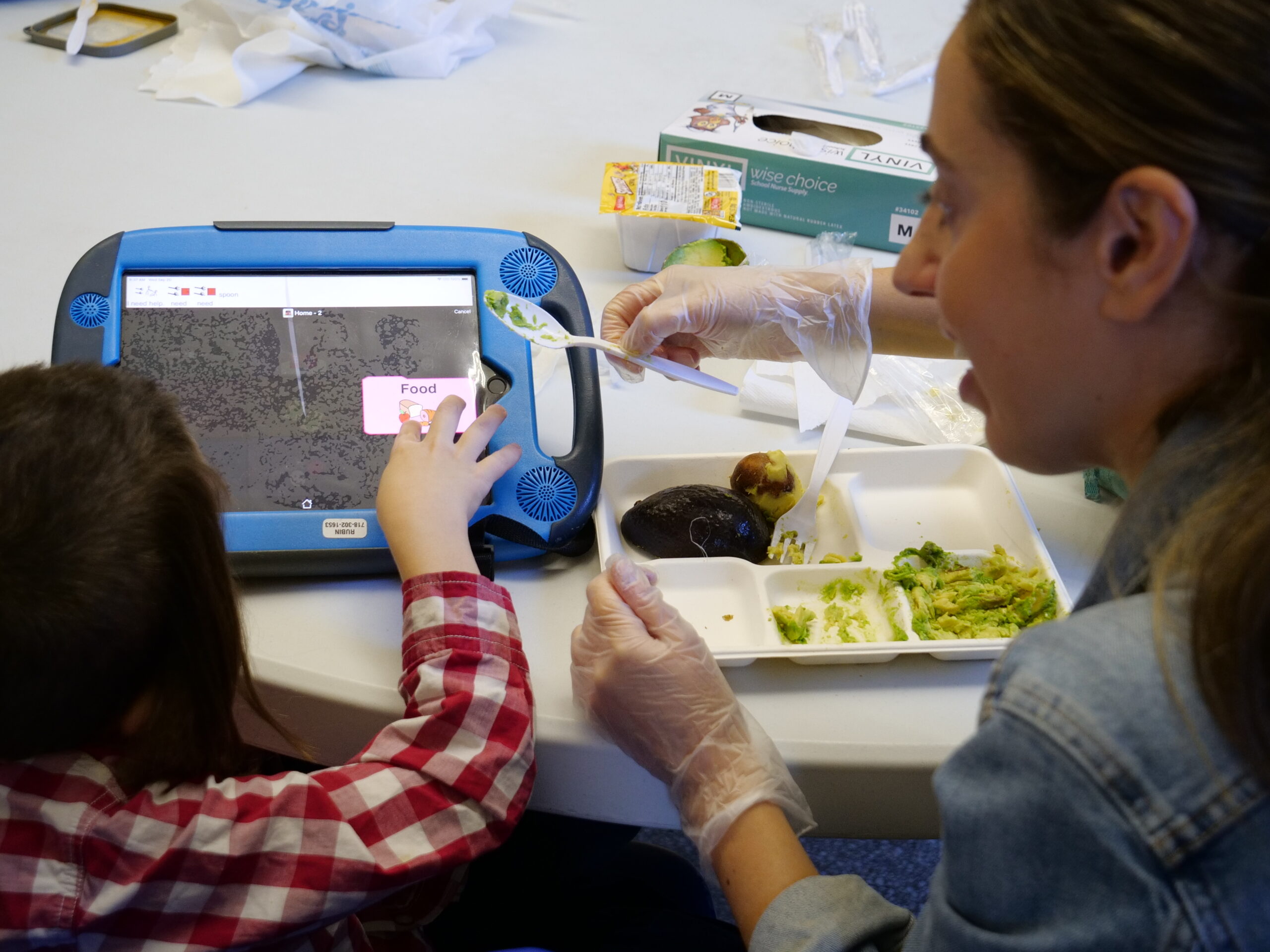
Highly skilled speech language pathologists trained in implementing evidence-based interventions designed to help students become effective communicators.
Individual & Group Speech sessions are designed to address the development of:
Auditory Receptive Skills
Speech Reading
Speech Production
Expressive Language
Receptive Language
Service Delivery Model:
Therapy Room, Push -In to Classroom, Push In to Specials, Push-In to Cafeteria, Community Based Instruction
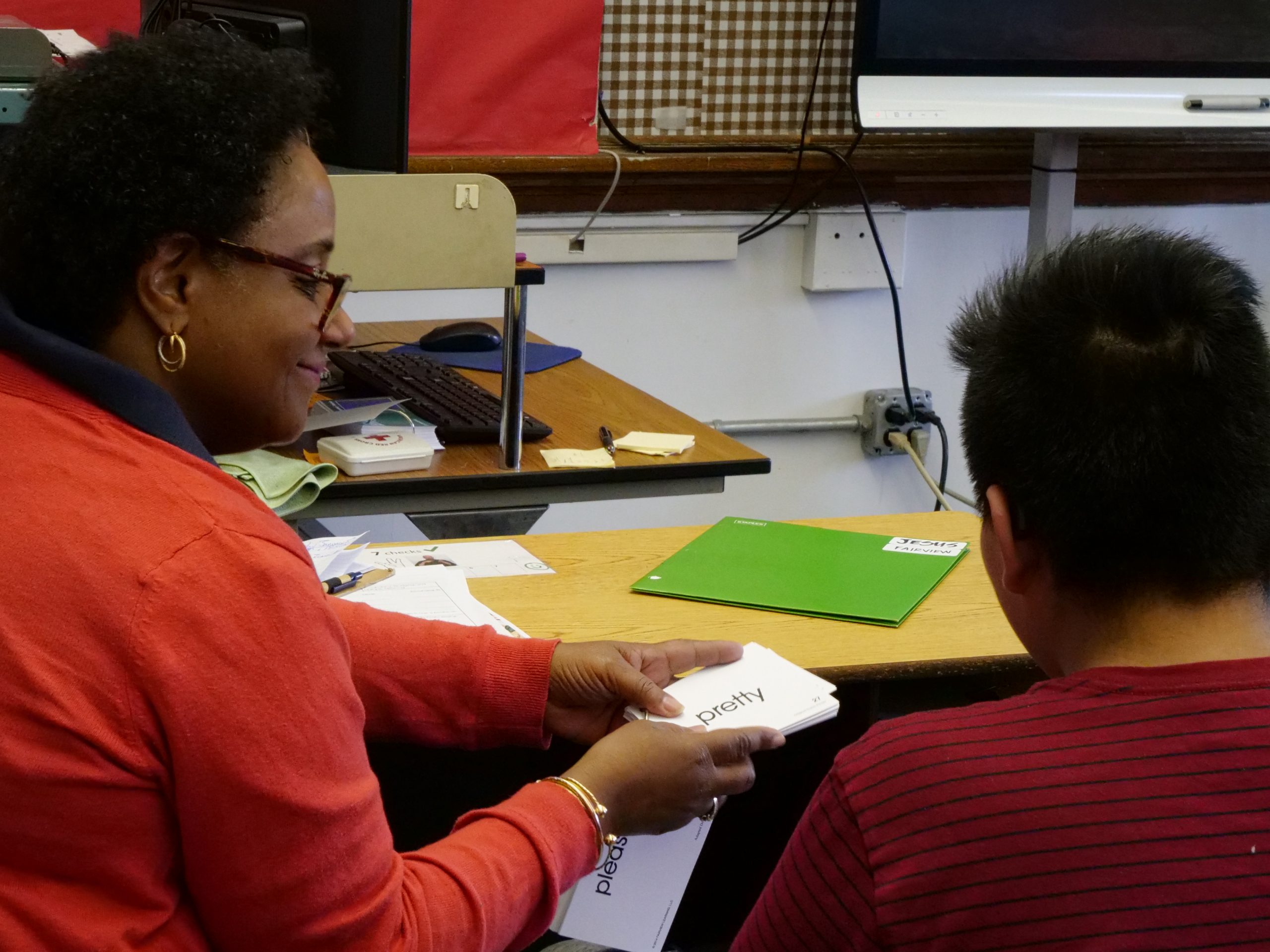
Multi modal approach to communication inclusive of:
American Sign Language
Spoken English
Picture Exchange Communication System
Mid Tech Augmentative Alternative Communication Devices
High Tech Augmentative Alternative Communication Devices
Feeding Therapy
Pediatric Dysphagia Management
Increase Oral Intake
Pediatric Sensory Based Feeding difficulties
Partner closely with medical professionals and families to provide holistic approach to feeding therapy
Assistive Technology Lending Library
Adapted Toys
Adapted Keyboards
Bluetooth Switches
Sensor Switches
PECS Communication Books
Mid Tech Devices (i.e., Go Talk +9)
High Tech Devices (i.e. iPads)
AMDI Cases for iPads
Mounting Plates for AAC devices
Communication APPS- Proloquo2Go, TouchChat, PECS IV, Go Talk NOW
Writing APPS- Pictello, CoWriter
Math Computation APPS- Splash Math K-5, IXL, My Math, Visual Multiplication, FasTT Math NG for Schools, Teaching Number lines
Staff Credentials:
ALL speech therapists are CCC-SLP and Certified PECS Implementers
Other certifications include Prompt Therapy, Sequential Oral Sensory Approach to Feeding
Counseling
Individual counseling as mandated on students IEPs
Advocacy and referrals
Support and education workshops for parents
Consultation with educational staff
Member of the Child Study Team
Member of the PBIS Team
Foster a safe, secure, and inclusive environment for all

